Are you an iPhone owner that lives or works in an area that has weak AT&T GSM coverage? I’ve had some issues at Gadgeteer HQ (my basement office) as well as my desk at my day job. Seeing a ‘no service’ notice at the top of my iPhone’s screen can be quite annoying, so I was very curious when the folks at Griffin Technology asked if I would like to review their ClearBoost Antenna-boosting case.
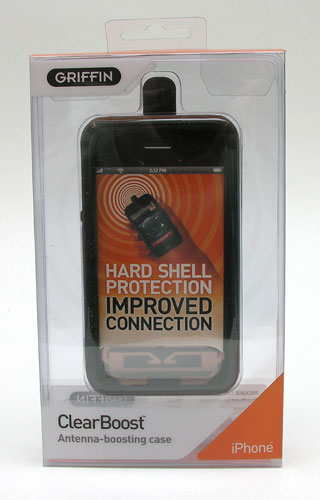
According to the packing details, the ClearBoost case “Dramatically improves the reliability of your iPhone connection”. Let’s see if that claim is true…
Package Contents
ClearBoost case
Cleaning cloth
Static peel screen protector
Available only in Black, the ClearBoost is a hard polycarbonate / rubber play through case make specifically for the iPhone.
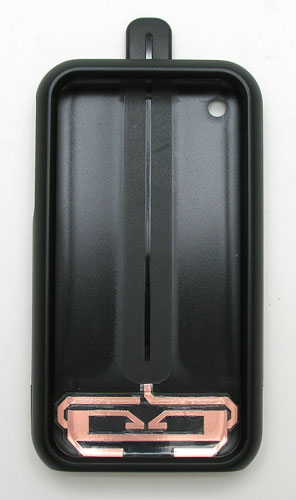
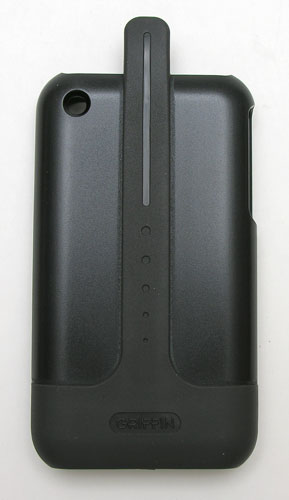
Upon taking the case out of the packaging, I was immediately struck by the fact that there did not appear to be any special connectors built into it to plug into the iPhone. The back section of the ClearBoost has a rubber covered antenna nub built into it that has been tuned for AT&T’s 850 MHz GSM network.
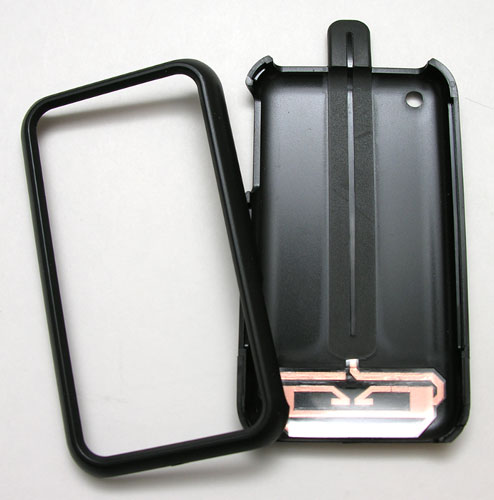
The bezel portion of the case unsnaps to reveal what looks like copper traces on the lower area of the bottom half of the case. These copper traces are covered with a thin layer of clear plastic.
When you place the iPhone in the bottom section of the case, the copper traces line up with the area where the iPhone’s antenna is located. But, there isn’t a physical connection. I don’t pretend to be an electronics genius, but I would think some sort of connection would be required for boosting to actually work. I later learned that the visible part (traces) in the case make a capacitive connection to iPhone’s built-in antenna. Hmmm, ok.

The top portion of the case securely snaps over the bottom section to provide protection from daily abuse. There entire face of the iPhone is open and unobstructed. On the Left side, there is a cutout that allows access to the Mute and Volume switches.
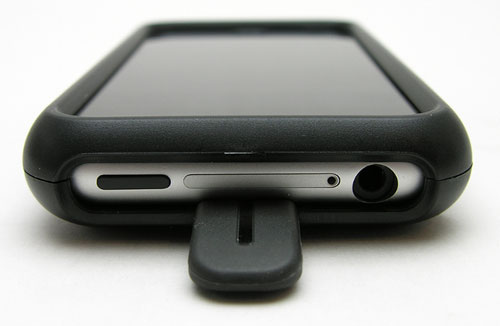
Another cutout in the top of the case gives you the ability to plug in headphones, access the SIM card slot and power button. You’ll also notice the antenna nub in the center. It looks like the iPhone is sticking it’s tongue out at us, doesn’t it? ;o)
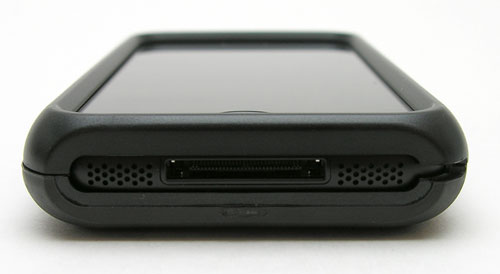
An opening on the bottom reveals the speakers and docking connector. On the Right side, you can see a slot where the two halves of the case meet. To remove the case, you can use a flat head screw driver or a coin to pop the case open at this point.
As a case, the ClearBoost gets no complaints from me. It feels hard, rugged and protective. Now let’s see if it can boost our signal too.
Does it boost?
When checking signal strength, a person’s first instinct is to check to see how many bars the see in their signal meter. That’s exactly what started to do after placing my iPhone inside the ClearBoost case. But then I remembered the document that the Griffin phones sent me to read before proceeding with my review, so I retrieved it, read it and learned that the number of signal bars is not the best reception indicator. Here’s what they say:
“You might assume that the most obvious way to test ClearBoost’s effectiveness would be to
check the number of bars displayed in the “bar graph” on the top of iPhone’s touchscreen with
and without ClearBoost. It’s important to note, however, that iPhone does not use signal
strength exclusively when determining how many bars to display on the bar graph. The bar
graph is a calculated value based on several factors referred to as a “signal quality estimate.”
In short, it’s a graphical representation of a very complex calculation. Depending on your area,
available signal, and several environmental factors, the bar graph may not update when your
iPhone is placed in ClearBoost, even when there is signal gain.”
So, how are we going to determine if the ClearBoost actually helps our signal, if we can’t trust the signal meter? We put the iPhone in field test mode and compare cell tower strength with and without the case. To do that, you just bring up the dialer and ‘call’ *3001#12345#* When you do this, you’ll be presented with a menu that let’s you see all kinds of technical information. But for this review, we’re only interested in the cell information.

This screen will display information about the cell towers that you iPhone can see, and will list them in order of the strongest signal to weakest signal.
The first set of numbers shown is RX: -xx. This value represents the amount of signal your
iPhone is receiving from that specific cell tower, measured in dBm. This is the number to watch when comparing the reception benefit of the ClearBoost case. So, for example, a value of -111 would indicate very reception, whereas a -60 would indicate very good reception. If a tower is showing a value at or below -106, you probably will not be able to make a call at all.
With all that in mind, let’s get on with the tests… In an attempt to be thorough, I tested in four different locations and recorded the best signal after at least 45-60 seconds of monitoring.
Basement Office laying flat on desk (signal meter 1 bars):
Without ClearBoost: -98
With ClearBoost: -98
Basement Office standing up on desk (signal meter 2 bars):
Without ClearBoost: -90
With ClearBoost: -94
Main Floor near window laying flat on table (signal meter 3 bars):
Without ClearBoost: -90
With ClearBoost: -91
Main Floor near window standing up on table (signal meter 3 bars):
Without ClearBoost: -91
With ClearBoost: -95
Outlet Mall (signal meter full bars):
Without ClearBoost: -48
With ClearBoost: -56
At my Dad’s (signal meter full bars):
Without ClearBoost: -75
With ClearBoost: -75
As you can see from my informal testing, the ClearBoost case didn’t appear to help increase reception. As a matter of fact, it actually appears to make it worse…
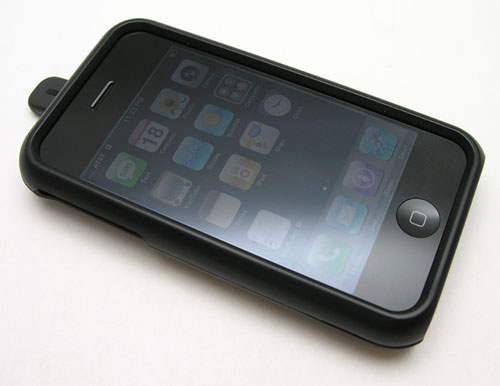
After a day’s worth of testing, I’ve come to the conclusion that relying on the ClearBoost case to make your iPhone’s reception stronger, will probably end in disappointment. As a case, it will protect your iPhone, but as a signal booster, it will fail to impress…
Apple iPhone 14, 128GB, Purple - Unlocked (Renewed)
Apple iPhone 14 (Renewed), 128GB, Midnight - Unlocked
Product Information
| Price: | 29.99 |
| Manufacturer: | Griffin Technology |
| Requirements: |
|
| Pros: |
|
| Cons: |
|

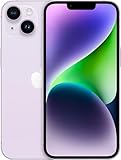

Gadgeteer Comment Policy - Please read before commenting
This case has been an enigma to me since information on it started hitting the ‘net. It seems entirely gimmicky, not unlike the free “cell antenna boosters” Chinese cell phone accessory vendors like to throw in on eBay.
Griffin is IMHO a very respectable manufacturer dedicated to (generally) producing high quality, reliable accessories for Apple iPods and Macs. When I need a charger, an FM transmitter, a laptop stand, etc. I tend to check their website first to see what their current offerings are before looking at other options.
A product like this case, though, runs the risk of blowing that reputation (as your tests show); beyond that, the market segment for iPhone cases is already packed with options … if you’re going to risk blowing it (and their design and marketing teams HAD to know this is near fraud), at LEAST do it on something that’s worth taking the risk, not some dime-a-dozen iPhone case.
It just surprises me, I guess.
Unlike the stick-on “signal boosters”, something like this could actually work in theory. The builtin antenna and the electrode in the case form a capacitor with the iPhone housing as the dielectric. Through-glass antennas work this way, as do some of the FM modulator adapters that come with satellite radios these days.
The big problem with this approach, though, is that capacitive coupling is lossy. Thus, whatever you attach to it must have enough gain to be able to make up for this loss just to break even. And in an application like this, it doesn’t just have to break even, it has to offer some overall improvement otherwise there is no point in using it.
It’s not as if that sort of little nub is actually any better than the one inside the phone, so the only real advantage here is, most likely, moving it to what may be a better location. I’m not surprised to find out it doesn’t actually help, especially when taking into account the loss from the coupler and extra feedline (all three inches of it)…